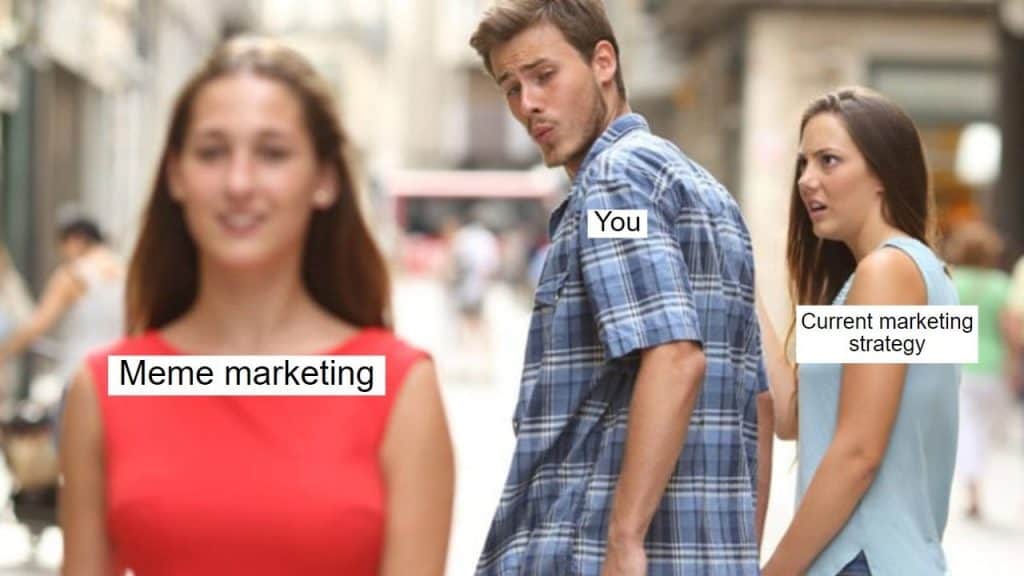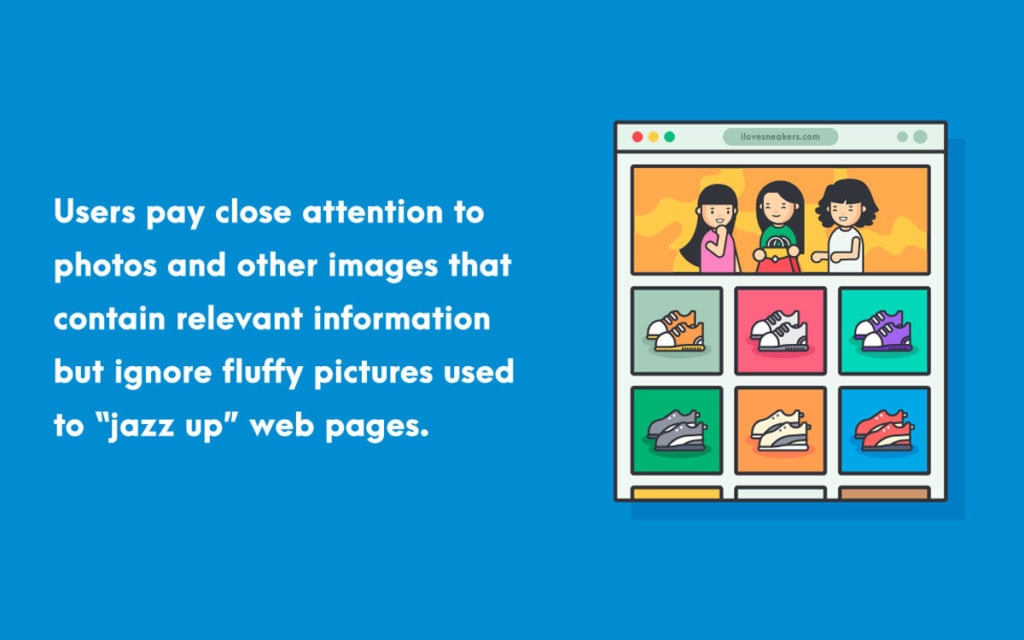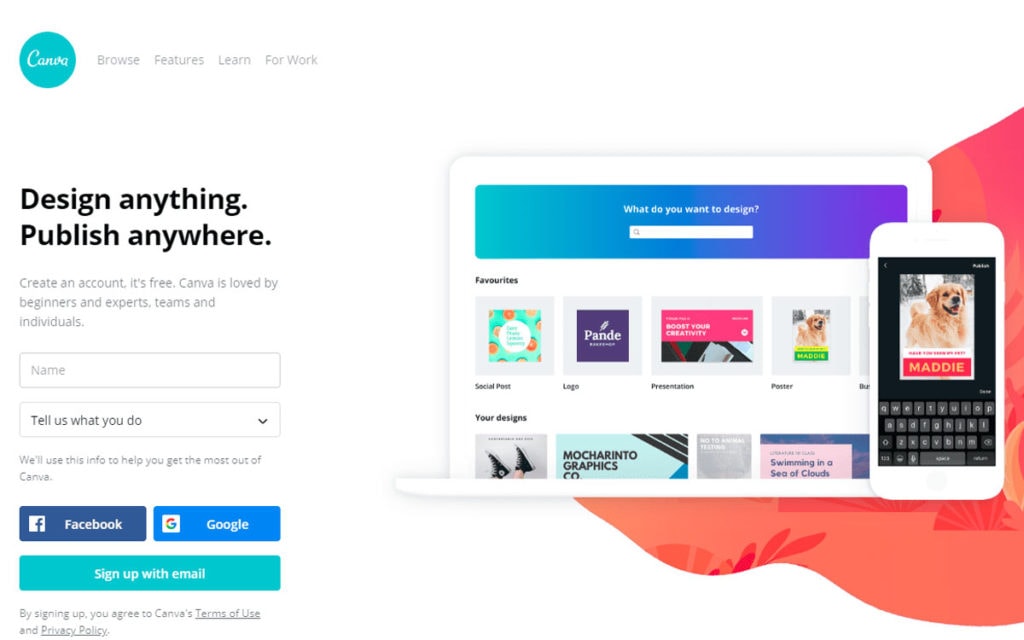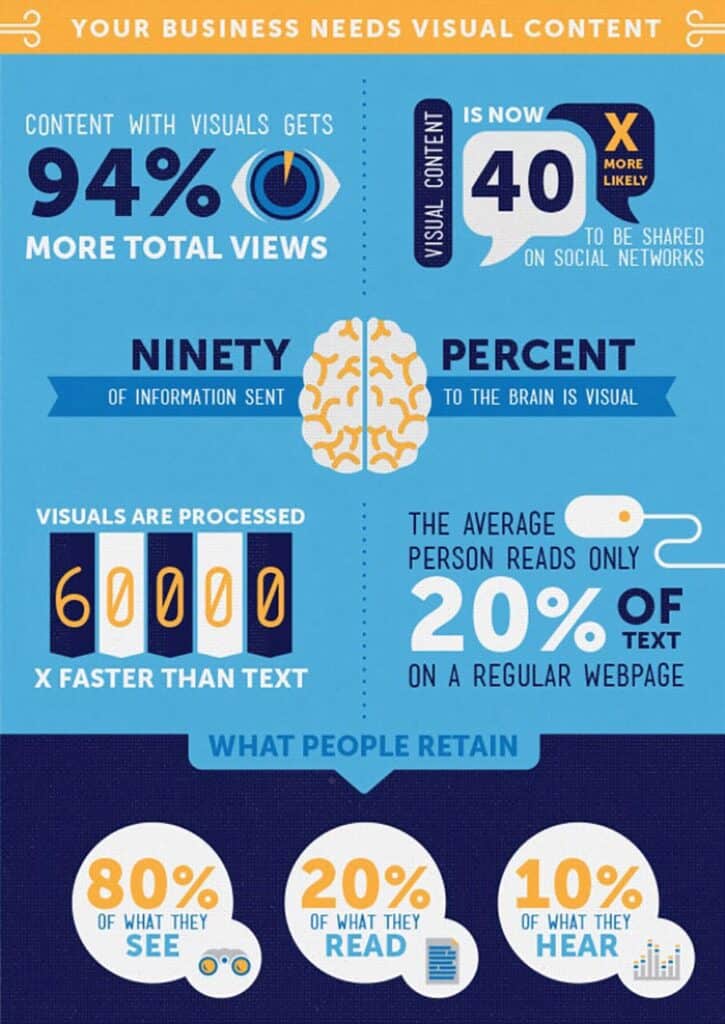Visual Content in Marketing and Communications
In today's world of information overload and diminishing attention spans, visual content has become one of the most powerful tools for cutting through the noise and connecting with audiences. Images, videos, infographics, and other graphic formats allow marketers to tell stories, convey complex information, and evoke emotions in ways that text alone often cannot.
Visual content tends to attract and engage viewers more than text. We are visual creatures—our brains process visual data far more quickly than text. An MIT study found that the human brain can process an image that it sees for as little as 13 milliseconds. Visuals also tap into our emotions more directly and can help us retain information better. As the saying goes, a picture is worth a thousand words.
In this article, we'll explore why visual content should be an essential part of your marketing and communications strategy, look at different types of visual content and their unique benefits, and provide tips for creating compelling visuals that capture attention and drive results.
Table of Contents
What’s the Deal with Visual Content?

Visual content isn't just a fad – it's the future. And the future is here.
See, the brain loves images. Pictures, graphs, drawings, photos – they slide right into our minds with barely any friction. No tedious reading is required. Just – bam – instant brain food.
Words, on the other hand, require work. Mental effort. Cognition. And who has time for that?
In the age of distraction, visual content is like a tall, cold glass of lemonade on a hot summer day. Refreshing, irresistible, and gone in seconds. It is quenching our thirst for information without drowning us in detail.
Plus, pictures spell authority. Data visualised looks smart. A video seems polished. Even a simple graphic appears reputable.
Text alone looks, well, alone. Naked. Vulnerable.
Images give words clothing – making them presentable and professional.
Social media eats visuals for breakfast. Eye-catching photos and videos spread faster than words on platforms built for thumbing and scrolling.
So, if you want your marketing to be seen, your posts to be shared, and your ideas to ignite – make them visual. Show, don't just tell.
Because in business, as in dating, looks matter. And visual content makes you look good.
Why Visual Content Matters

There are several vital reasons why visual content should be central to your communications efforts:
Visuals Are More Engaging
Visual content provides a way to grab people's attention in an increasingly distracted world quickly. Articles and blogs with relevant images get 94% more views than those without, according to content marketing platform Buzzsumo. Viewers also tend to look at visuals before reading text and are naturally drawn to images that break up blocks of text.
Visuals Are More Shareable
Social media platforms like Facebook, Instagram, and Pinterest are predominantly visual channels. Images boost viewers' understanding and make content more memorable and shareable. Tweets with images receive 150% more retweets than tweets without images.
Visuals Tell Stories
They say a picture is worth a thousand words. Visuals are powerful storytelling devices that can communicate emotions, ideas, and narratives in universally understood ways. A compelling infographic, for example, can clearly explain complex processes or data more efficiently than text.
Visuals Make Content More Scannable
We live in an age of information overload. Viewers appreciate the content they can quickly scan and digest. Charts, graphs, diagrams, photos, and other visual elements make content more scannable than dense blocks of text.
Visuals Enhance Branding
A coherent visual brand identity builds recognition and makes you more memorable. Using consistent fonts, colour palettes, image styles, and graphic elements reinforces what your brand stands for each time someone engages with your content.
Visuals Show, Don't Tell
The adage “show, don't tell” very much applies to visual content. Images and video can transport viewers into a story or idea more vividly than text. Seeing is believing, and visuals lend credibility and proof to your messages.
Types of Visual Content
There are countless formats and styles of visual content to help you meet your communications objectives. Here are some of the most common and impactful types:
Photography
Photography includes any images captured with a camera, from product photos to lifestyle images and portrait photography. High-quality photos perform best. Ensure you have rights to use pictures and optimise them for web use.
Infographics
Infographics visually communicate data, processes, timelines, statistics, and other complex information. They organise information in easily digestible ways using charts, graphs, illustrations, and minimal text.
Illustrations
Illustrations are original drawings, sketches, or digital artwork created from scratch. They allow you to convey ideas in fresh, conceptual ways beyond literal representations. Illustrations range from simple icons to complex scene illustrations.
Videos
Video is one of the most engaging visual formats. Videos educate and entertain audiences while conveying your messages in compelling multimedia stories. From brief animations to live-action sequences, video delivers information in dynamic ways.
Presentation Slides
Well-designed presentation slides distil concepts into concise visual chunks during in-person or virtual presentations. Limit text, use quality graphics, and keep a consistent visual theme.
Diagrams & Charts
Diagrams, flowcharts, graphs, maps, and data visualisations simplify and organise complex subjects into understandable formats using shapes, symbols, numbers, and minimal text.
Memes
Memes use imagery overlaid with text to convey humour, emotion, or ideas, often with social commentary. When used strategically, memes can humanise brands and connect with specific audiences by tapping viral trends.
GIFs
GIFs (Graphics Interchange Format) are short, looping, soundless animations that can capture attention quickly. Like memes, they inject visual humour and entertainment into communications when used appropriately.
Data Visualisations
Data visualisations present complex data and statistics in charts, graphs, and other graphics that spotlight vital insights and trends. They make data analysis more accessible and impactful.
Comics & Cartoons
Comics use sequences of drawings, often with text, to convey narratives entertainingly. Cartoons utilise exaggeration and humour to make conceptual points memorable. Both can provide an irreverent tone.
Best Practices for Visual Content

Now that we've looked at major visual content categories, let's explore some fundamental principles for creating compelling, effective visuals:
Be Relevant
First and foremost, visuals must directly relate to the topic and add value for the viewer. Don't use generic clipart or stock photos that have no real connection to the content. Every visual element should enhance and clarify your message.
Simplify
The most effective visuals are simple, clean, and uncluttered. Remove any unnecessary elements and text. Use generous amounts of white space to reduce visual noise. Follow the KISS (Keep It Simple, Stupid) and Less Is More principles.
Use Quality Images
Invest in professional photography and graphics whenever possible. Avoid distorted, pixelated, or blurry images that look amateurish. Images should be high-resolution and optimised for web use.
Know Your Audience
Understand your target viewers and what visual style will best resonate with them. Specific demographics may appreciate a more polished look, while others embrace edgier or retro aesthetics. Match the tone and complexity to the audience.
Maintain Consistency
Stick to consistent filters, image styles, fonts, layouts, and colour palettes within a campaign or brand channel. Consistency boosts recognition and amplifies your visual branding.
Use Strategic Text
Text overlays on visuals should be minimal and communicate big ideas or emotions. Opt for brief headings, slogans, or highlights rather than long blocks of text. Sans serif fonts tend to work best.
Tell Stories
The most potent visuals tell engaging stories and evoke emotions rather than just showcase products. Think about how to capture viewers' attention and give them an experience they will remember.
Know When to Use Visuals
As impactful as visuals can be, recognise when text alone will suffice. Visuals may overcomplicate simple or more technical topics. Always match your visual strategy to the content.
Optimise for Accessibility
Ensure visuals include alternative (alt text) descriptions for visually impaired users who rely on screen readers. Also, provide image captions and transcripts for video and audio content.
Check Licensing Rights
Only use visual content that you have the right to share and use commercially. Images and videos on stock sites will indicate licensing options. Don't simply grab images from Google searches.
Promote Your Visuals
Getting eyeballs on your visual content requires promotion across your website, social media, presentations, ads, and anywhere else you can showcase. Amplify your best visuals.
Tools for Creating Visual Content

We stand at a precipice of possibility regarding DIY visual content creation. We no longer rely solely on trained designers to manifest the images in our minds. The doors have swung wide open to new realms of visual expression using tools that require no advanced skills, only the urge to bring your visions to life.
Let's consider photo editing, where stalwarts like Canva, PicMonkey and Pixelmator have democratised the craft. With their drag-and-drop interfaces and vast libraries of layouts, filters and graphics, anyone can edit images worthy of a pro. The same goes for infographics using the powers of Piktochart, Venngage and Infogram. They allow us to turn data into visual stories through their templates and assets, designed for ease of use.
And what about video editing? Adobe Spark, Animoto and Biteable grace us with the ability to produce sleek, professional-looking videos using our phones and computers; no film school is needed. If presentations are your need, Google Slides, Beautiful.ai and Visme provide themes and tools to create visual slide decks that captivate audiences. Remember the power of data visualisations through Tableau, Plotly and FusionCharts to present complex data in readily understood charts and graphs.
The list goes on. Tools like Adobe Illustrator, Procreate and Vectr put illustration within grasp. Canva, Creative Cloud and PicMonkey bring graphic design to the masses. Recite, Over, and Designs.ai make social media visual content creation a breeze. Animation tools like After Effects, Powtoon and Renderforest allow anyone to set their visions in motion.
Many of these tools offer ready-made templates, millions of design assets and libraries of stock visuals to give DIY creators a head start. While nothing replaces human creativity, today's tools empower anyone to make visual magic, regardless of skill level. The doors are open; the table is set. Now dazzle the world with your visions made visible!
Visual Content Drives Results

What if I told you there was a type of marketing content that could captivate your audience, spread like wildfire, and stick in their minds like glue? Something so compelling that people can't help but stop scrolling and pay attention.
Sure, blog posts and whitepapers serve a purpose. But in our age of information overload and fleeting attention spans, images, videos, and graphics are table stakes. If you're not incorporating stellar visuals into your content mix, you’re leaving opportunity on the table.
Take Instagram. The pivot to a photo-first platform was genius. Now, over 1 billion people scroll daily for that quick visual fix. Is your brand there consistently feeding the beast? How about YouTube, where over 30 million visitors watch and learn through video every day? Are you telling your brand story in their language?
And it’s not just social photos, infographics, gifs, data viz, the list goes on. Wherever you can swap words for images that inform, entertain and inspire, you must.
But why? What's so magical about visual content?
For starters, it travels. Gets shared. Goes viral. Makes impressions. When people see something novel or remarkable, they pass it on. Are your ads visual 5-course meals while your content is bland text sandwiches?
Visuals also carry more weight. We inherently trust and remember them more. Brand logos, mascots, and iconic imagery embed themselves in memory. Are you creating a visual identity consistent enough to cut through the clutter?
Most importantly, visuals forge emotional connections. They hit us in the gut before the head catches up. We tear up during movies and while browsing our camera rolls. Leverage this limbic appeal. Turn ideas into moving stories that stick.
So consider this your wake-up call. Whatever you sell, inform, or spread, do it visually first, wherever possible. You’ll separate from competitors, win more mindshare, and unlock results previously out of reach.
Lean on formats suited to your message – infographics for stats, video for demos, photos for lifestyle. And test new visual platforms as they emerge.
The companies winning today obsess over visual storytelling and consistency. Don't get left behind telling yesterday's text-heavy stories. Images and video are the universal language of today and the future. Speak them fluently and watch what happens.
Frequently Asked Questions About Visual Content
What makes strong visual content?
Great visual content is relevant, tells a story, simplifies complex ideas, resonates emotionally, avoids clutter, and connects directly to your messaging and audience. Images and videos that inform, educate, inspire or entertain viewers make the most significant impact.
How can I create more shareable visual content?
Boost the shareability of visual content by tapping into trending topics on social media, using eye-catching graphics, adding text overlays that convey big ideas, and optimising images for different platforms. Funny, inspirational or surprising visuals tend to get shared more.
What visual formats work best on social media?
It depends on the platform, but square static images and short videos perform well across most social sites like Facebook, Instagram and Twitter. Vertical video ads are ideal for TikTok and Snapchat. Interactive polls, quizzes and carousels also spark engagement on social media.
How can I make visual content more accessible?
To make visuals accessible for all, provide alt text descriptions, use text overlays thoughtfully, include captions for video and audio, offer transcripts for multimedia, allow images to be zoomed in on, and accommodate screen readers and keyboard-only navigation.
What are some easy tools for creating visual content?
Canva, Venngage, PicMonkey, Adobe Spark and Infogram offer drag-and-drop templates to create engaging visuals easily. Piktochart, Visme and Tableau help with infographics and data visualisation. For video, Biteable, Adobe Premiere Rush and Animoto are user-friendly options.
Conclusion
In the digital age, visual content is essential for breaking through the noise to engage distracted audiences. Photography, video, illustrations, infographics and other graphic formats entice viewers to pay attention, retain information better and drive the desired actions.
Visuals make content more scannable and accessible. By tapping into emotions and storytelling, they forge deeper connections and bring ideas vividly to life. Following visual content best practices and principles reveals the full strategic power of images, graphics and multimedia to achieve marketing and communications objectives.
